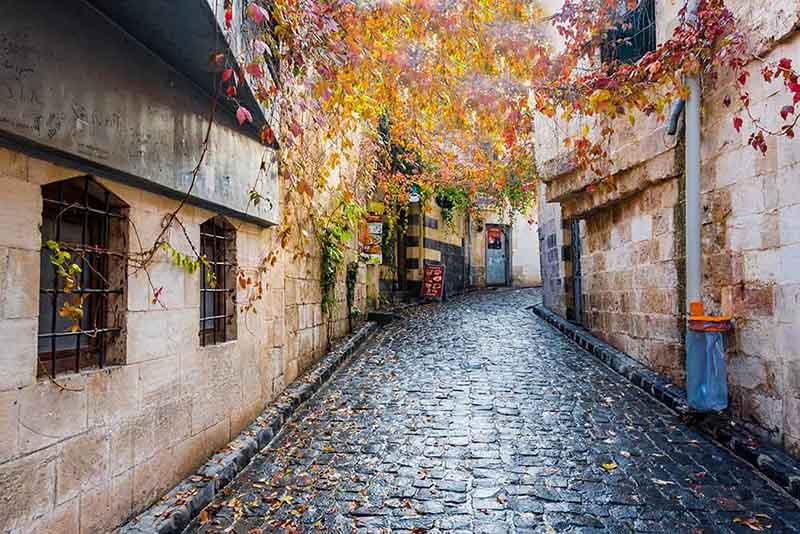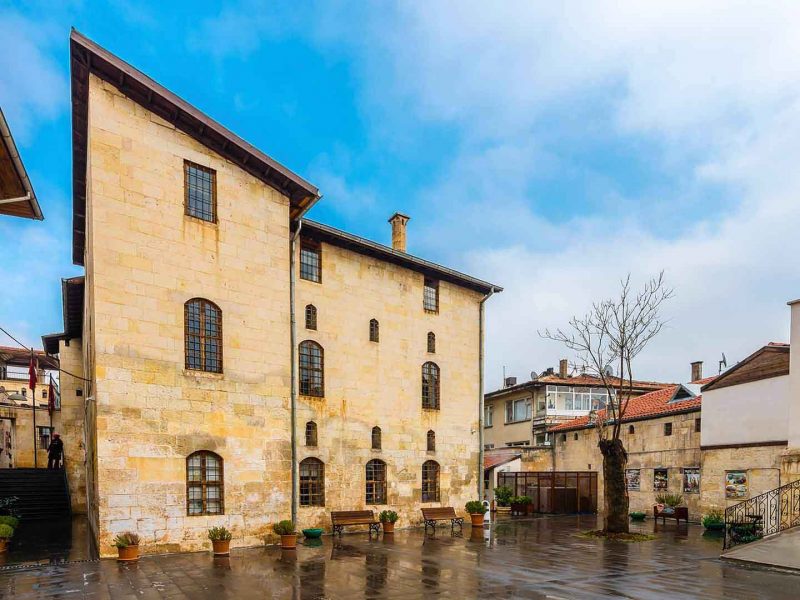Gaziantep‘s historical Bey district is a neighborhood that has hosted Armenians, Turks, Jews, and Syrians. Today, the neighborhood manages to keep its history alive with its narrow streets, museums, and traditional Gaziantep houses. For these reasons, the town of Bey has always been the center of attention for those who come to visit.
According to Evliya Çelebi Travelogue, “Every street in the neighborhood has a castle-like door. Each night in the streets, the candles will light up”. Berkay Yıldırım, who conducts research on the neighborhood in his master thesis, draws attention to the cultural transformation of the neighborhood and the spaces. It is a complete mosaic of culture! We are talking about the existence of the Armenians, but even the Armenians are not fully monolithic. In addition, there are peoples of Jewish and Turkish origin, and these peoples have their own culture and traditions, but it is also possible to mention a similarity between them. The food culture, for example. Almost all of the dishes known as Gaziantep local dishes are well known by the Armenians.
“Until the Restoration Period”
The neighborhood, according to the records of the registry book of 1536, is comprised of 40-50 households. In the construction of houses, havara stone was used, which was subtracted from the quarries. In addition to being easily processed by the general structure of the stones, it was preferred by those who pioneered the architecture of the neighborhood due to its being a kind of isolation function against the cold and summer heat in winter. The fact that the houses were built behind the high garden walls of 4-5 meters called “süyük” gives the impression that family privacy was at the forefront. In large courtyards behind high walls, most of daily life, also called “hayat,” was passed.
The high garden walls can give the idea of a life detached from the neighborhood culture, but there are passages under each house that lead to the side house. In addition, there were sofa-style concrete elevations in the streets that were used for evening gatherings for high-tea and dinners, and the neighbors stayed together until late. It is possible to see the influence of the Armenians living in the neighborhood in the second half of the 19th century on the cultural tone of the neighborhood. There are various reliefs on places such as the ceilings of the houses and the entrance doors, and the 1st Protestant Church also served as the first cinema of the city.
The Houses with Stories are Now Commercial Undertakings
Every house has a story in Bey District. The house which now serves as Papyrus Café was built in 1854 by the Nazaretyan family and used to be known for piano sounds coming from the courtyard. As a matter of fact, the neighborhood, where both economic and cultural capital has changed, underwent a transformation in 2005 within the scope of street rehabilitation. Nowadays, Syrian families are in the neighborhood with the 50-year-residents who cannot leave due to the protection instincts of their family structures. However, this does not prevent the dominance of the commercial institutions operating in the district.
Cathedral is a Mosque Today
After the Antep War, there was a symbolic transformation and reproduction process in place following the departure of Armenians. The fact that there are still surviving buildings today is not because the collisions are less severe, but because the structures are proficient. For example, the Kendirli Church, which today functions as a cultural center, was destroyed after the Armenians left the city. St. Mary Church, or the Cathedral of the Holy Asdvadzadzin, is today called Kurtuluş Mosque. The place we are talking about is known to have functioned as a torture room during the September 1980 coup d’etat. It is also possible to say that places and periods are shaped according to their internal dynamics and livelihoods. For example, bird shelters were built on the facades of houses. But today, those bird nests are closed with iron bars. After the restoration, there was as much change in the social life of the neighborhood as there was innovation, however, it is hard to say if this change made the neighborhood more livable.



